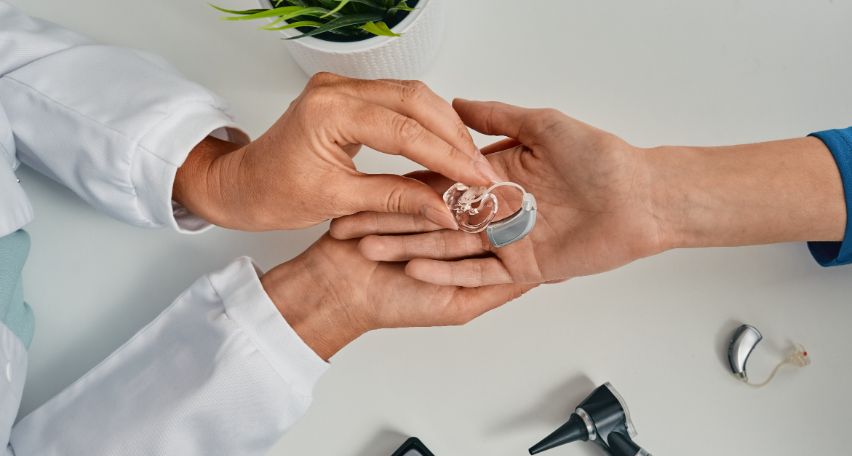The genesis of the first hearing aid can be traced back to circa 1876, thanks to the invention of the telephone by Alexander Graham Bell, which included technology that could control the frequency, loudness, and distortion of sound. In that way the first hearing aid was designed as early as 1867, but the first hearing aid per se was invented only in 1898 by Miller Reese Hutchinson. The design invented by Hutchinson used an electric current to amplify weak signals.
Commercial Production
However, the introduction and commercial production of hearing aids began only in 1913. Besides being complex, these devices were not portable. Seven years later, in 1920, vacuum-tube hearing aids were manufactured. The functionality of vacuum-tube hearing aids was that they could turn speech into electric signals and amplify the same signals.
Only post World War II, the concept of miniaturization of hearing aids ushered in, along with other technological advances. Then came the invention of transistors back in 1948, replacing the vacuum tubes in previous models of hearing aids. Transistors were compact and needed less battery power, with minimal distortion.
Then, in the ’70s, we saw the creation of a microprocessor and multi-channel amplitude compression. If the microprocessor had brought miniaturization to a new level, the compression paved the way for using digital technology.
Evolution
It is from this phase that the evolution of hearing aids began rapidly. In the ’80s, we did see the creation of high-speed processors and microcomputers, while the following decade, we did witness the appearance of the first all-digital hearing aid! The 2020s witnessed the introduction of the concept of Bluetooth-enabled devices into the repertoire.
So, the evolution of the hearing aid’s timeline goes like this: 1898-99 invention of the electric hearing aid happened, while in 1920, the battery-powered vacuum tube hearing aid was invented. In 1932, the first wearable bone conduction hearing aid was introduced, and in 1948, the first hearing aid with a printed circuit was introduced. In 1953, the concept of the cochlear prosthesis was developed. A cochlear implant with biocompatible materials was developed in the 1960s. Then in the ’80s, we saw the production of hearing aids using microprocessors, and in 1987, the first digitally programmable hearing devices were introduced. Last, but not least, in 2009, we saw the software application to transform iPhone into a hearing device being developed. So, the timeline of the evolution of auditory devices shows that innovations in this space have been intermittent. They were not disruptive, rather than being mostly incremental in the form of enhanced amplification, better noise cancellation, and improvements in design. A silver lining is visible on the horizon, as the global hearing devices market is poised for innovation.
The global hearing aid devices and equipment market is expected to grow from $12.3 billion in 2021 to $13.8 billion in 2022 at a compound annual growth rate (CAGR) of 12.2%. The global hearing aid equipment market size is expected to grow to $21.08 billion in 2026 at a CAGR of 11.2%The global hearing aid devices, and equipment market size is expected to grow from $12.3 billion in 2021 to $13.8 billion in 2022 at a compound annual growth rate (CAGR) of 12.2%. The global hearing aid equipment market is expected to grow to $21.08 billion in 2026 at a CAGR of 11.2%.
